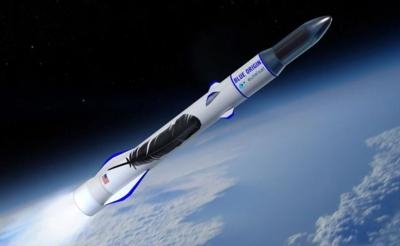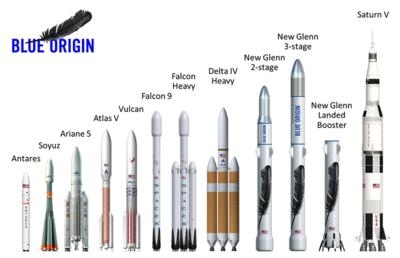Mission Will Study Red Planet’s Magnetosphere
NASA’s Launch Services Program (LSP) awarded Blue Origin’s New Glenn heavy-lift orbital launch vehicle the Escape and Plasma Acceleration and Dynamics Explorers (ESCAPADE) contract. Subject contract is part of NASA’s Small Innovative Missions for Planetary Exploration (SIMPLEx) program—a dual spacecraft mission intended to study Mars’s magnetosphere.

ESCAPADE is a Class D mission by which NASA sets out to study solar wind energy transfer through Mars’s unique hybrid magnetosphere. In NASA parlance, Class D describes missions that are of low priority to the space agency’s strategic plan; represent low to medium national significance; are of medium-to-low complexity, low-cost, and short duration (less than two years); and have few launch constraints and broad alternative launch or re-flight opportunities.
Providing launch services for ESCAPADE is a task order that falls under the auspices of NASA's Venture-Class Acquisition of Dedicated and Rideshare (VADR) launch services contract. Blue Origin was on-ramped to NASA’s VADR launch services Indefinite Delivery Indefinite Quantity (IDIQ) contract on 26 January 2022, with a five-year period of performance.
Blue Origin New Glenn senior vice president Jarrett Jones stated: “ESCAPADE follows a long tradition of NASA Mars science and exploration missions, and we’re thrilled NASA’s Launch Services Program has selected New Glenn to launch the instruments that will study Mars’ magnetosphere.”
Named for NASA astronaut and America icon John Glenn, the New Glenn spacecraft is a two-stage rocket with a diameter of 23-feet (seven-meters). The craft’s first stage is to be powered by seven of Blue Origin’s inchoate BE-4 engines.
After the fashion of the New Shepard suborbital launch vehicle by which it was preceded, New Glenn's first stage has been designed to be reusable. In 2021, the company initiated Project Jarvis, a paroxysm of conceptual design work by which Blue Origin seeks to render New Glenn’s second stage similarly reusable.
At present, New Glenn’s first stage is designed to be reusable for a minimum of 25 flights, and will return to Earth via a controlled descent to a vertical landing. The vehicle’s as-of-yet expendable second stage will share the same diameter as the first, and be powered by a pair of Blue Origin’s hydrogen/oxygen BE-3U vacuum optimized engines.

Blue Origin has set forth that the planned, full-operational payload capacity of New Glenn’s two-stage iteration will be 29,000-pounds (13,000-kilograms) to Geosynchronous Transfer Orbit (GTO), and 99,000-pounds (45,000-kilograms) to a 51.6° inclined Low Earth Orbit (LEO). The company qualifies its claims, however, stating New Glenn’s initial operating capability may be somewhat lower.
The BE-4 methane/oxygen engines and BE-3U engines by which New Glenn’s first and second stages will be motivated are advertised to produce 3,800,000-pound-feet (17,000-kilonewtons) and 150,000-pound-feet (670-kilonewtons) respectively.
New Glenn launches will ostensibly be made from Cape Canaveral Space Force Station’s Launch Complex 36 (LC-36), which was leased to Blue Origin in 2015. A launch site at Vandenberg Space Force Base is also planned
Dual-satellite launches will be offered to private, military, and governmental clients after New Glenn’s first five flights.
 Aero-News: Quote of the Day (12.07.25)
Aero-News: Quote of the Day (12.07.25) ANN's Daily Aero-Linx (12.07.25)
ANN's Daily Aero-Linx (12.07.25) NTSB Final Report: Lafferty Jack Sea Rey
NTSB Final Report: Lafferty Jack Sea Rey Classic Aero-TV: The B29 SuperFortress Doc - History in Flight
Classic Aero-TV: The B29 SuperFortress Doc - History in Flight Airborne 12.08.25: Samaritans Purse Hijack, FAA Med Relief, China Rocket Fail
Airborne 12.08.25: Samaritans Purse Hijack, FAA Med Relief, China Rocket Fail




